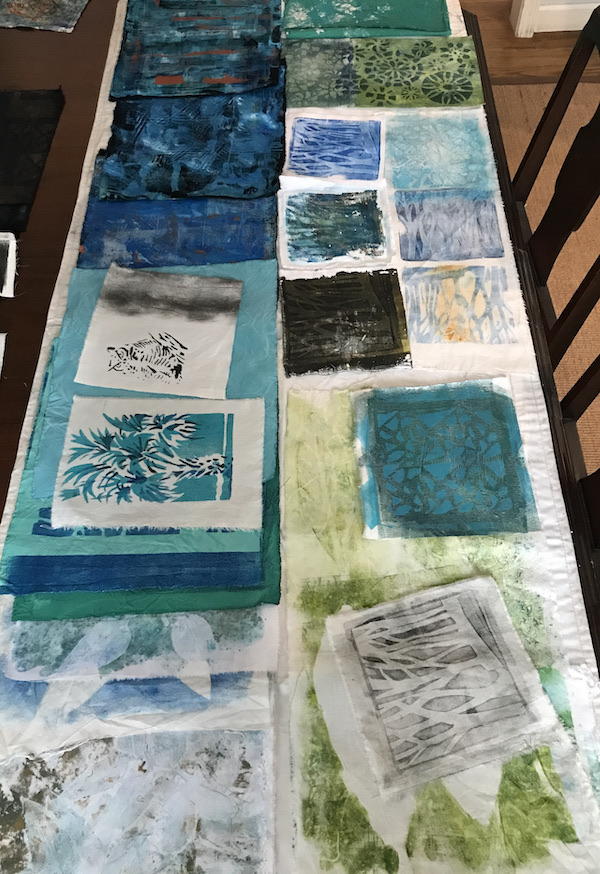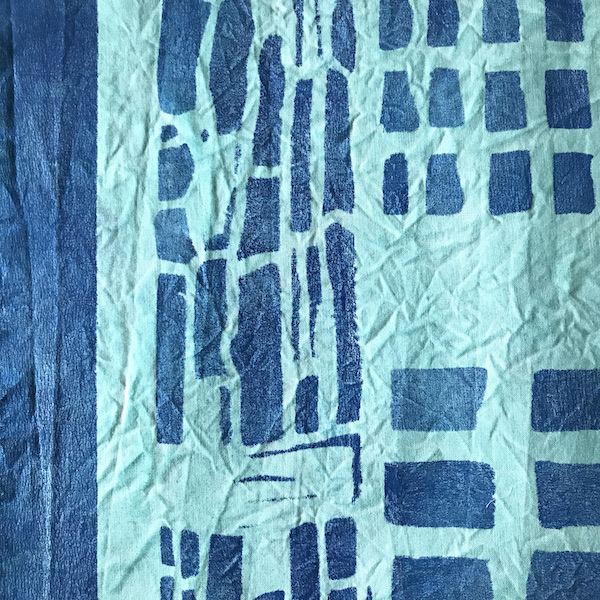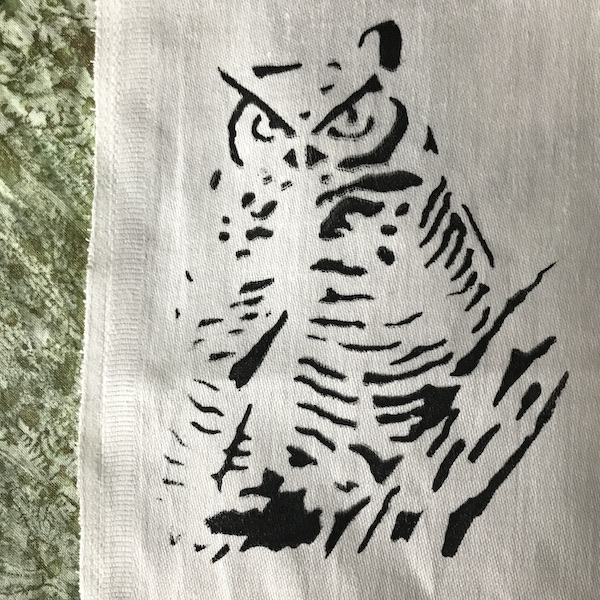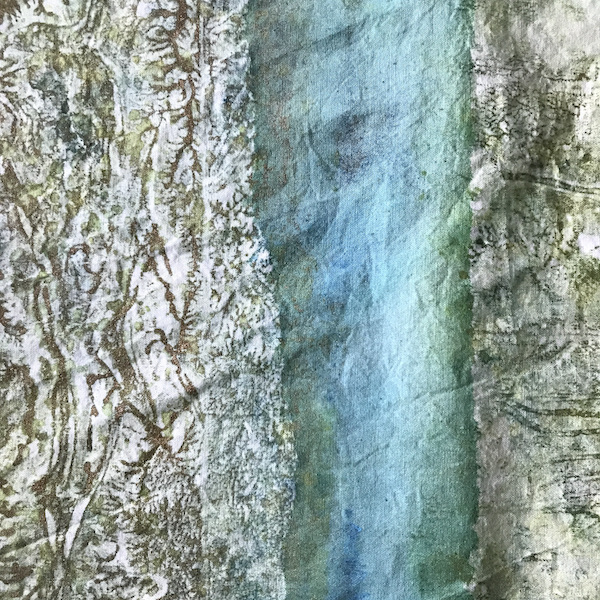With turquoise as my Color of the Year, I’ve started collecting and printing fabrics for a new group of collages. I have a few fabrics in my stash that may work, and I want to print some fabrics using the gelli plate.
To begin, I gathered three plain fabrics; black and white cotton and unbleached muslin. I gathered stencils, texture plates, and leaves from the yard. As I worked, I thought about making light, dark, and middle value prints. I combined images, texture, and solid colors. I don’t know how these pieces will fit together in a collage, but the blue-green colors and garden-inspired images are a good starting point.
Over several days, I printed with different paints and observed how they interacted with the different fabrics. One day I felt frustrated that nothing was working as I expected. It had been cold overnight and I had forgotten to leave the heater on in my studio. The temperature was in the 40’s in the morning. I had turned on the heat and the air temperature warmed up enough for me to work (in several layers clothes). But I realized the gelli plate was still cold. The paint tubes were cold. The paint seemed sluggish and stuck to the plate instead of the fabric. I didn’t get many prints that I liked that day. The next day things the studio was warmer and worked better. That’s a lesson I need to remember in the winter!
Below are some of the effects that I found interesting with notes about how I made them.






Rich Kelley
12 Jan 2021That’s a cool owl.
lucindahowe
12 Jan 2021Thanks!
Donna
12 Jan 2021On your last example, what do you mean by textured print on the fabric? Do you stretch the fabric before stencilling?
When I use stencils even on a firm surface, I sometimes have trouble determining the thickness of paint. How do you determine the paint thickness on the more absorptive fabric?
lucindahowe
12 Jan 2021I roll a thin layer of paint on the gelli plate with the brayer, then make texture by pressing objects into the paint and lifting them. It can be bubble wrap, foam stamps, or anything. Then pull the print and the texture shows up. I don’t stretch fabric, just smooth it onto the plate like a piece of paper.
The only way I know to figure out how much paint is to experiment until you get the effect you want. The amount of paint varies according to viscosity, weather, pigment, age of the paint, and maybe the phase of the moon.
Regina Monteith
12 Jan 2021Lovely effects with copper and bronze. Love the wet streak. Great owl!
lucindahowe
12 Jan 2021Thanks, Regina!